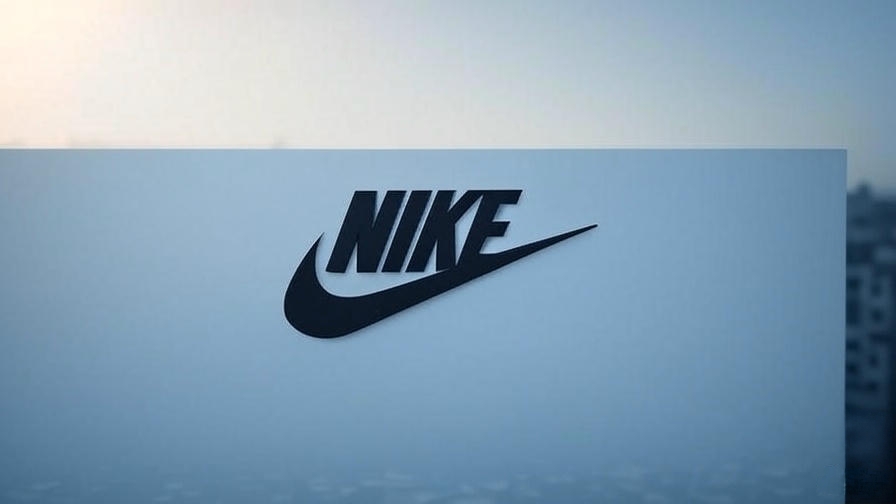Nike, Inc. is a name synonymous with athletic excellence, innovation, and style. With its iconic Swoosh logo and the motivational slogan “Just Do It,” Nike has become the world’s largest supplier of athletic shoes and apparel, as well as a major manufacturer of sports equipment. This blog article dives deep into Nike’s history, mission, products, marketing strategies, controversies, sustainability efforts, and its impact on the global sports industry. Written in a simple and engaging way, this comprehensive guide is for everyone—whether you’re a sneaker enthusiast, a business student, or just curious about the brand behind the Swoosh.
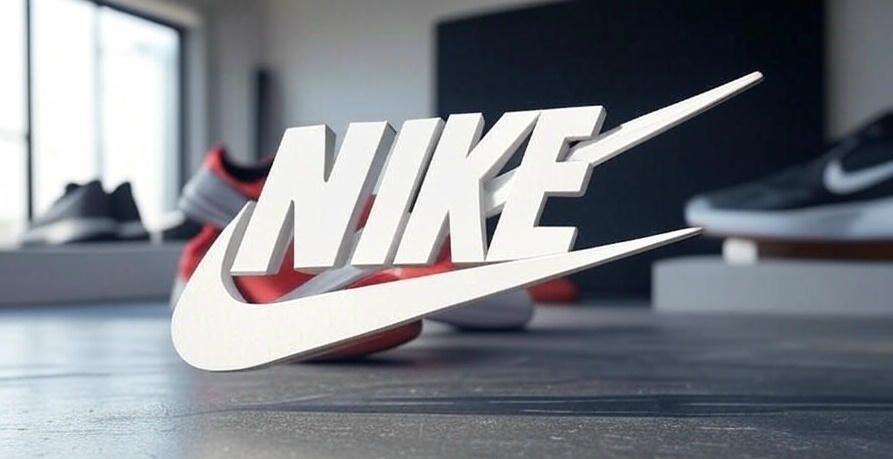
𝗧𝗵𝗲 𝗢𝗿𝗶𝗴𝗶𝗻𝘀 𝗼𝗳 𝗡𝗶𝗸𝗲: 𝗔 𝗛𝘂𝗺𝗯𝗹𝗲 𝗕𝗲𝗴𝗶𝗻𝗻𝗶𝗻𝗴
Nike’s story began in 1964, not as Nike, but as Blue Ribbon Sports (BRS), founded by Phil Knight, a former University of Oregon track athlete, and his coach, Bill Bowerman. The duo started small, importing high-quality, low-cost running shoes from Japanese shoemaker Onitsuka Tiger and selling them out of Knight’s car at track meets in Eugene, Oregon. Their goal was simple: provide affordable, high-performance footwear for athletes, something they felt was missing in the American market.
Bowerman, a visionary coach, was obsessed with improving athletic performance through better equipment. He experimented with shoe designs, even creating early prototypes in his garage. One of his most famous innovations was the “Moon Shoe” in 1972, named for its waffle-like sole that resembled the footprints left by astronauts on the moon. This design, born from Bowerman pouring rubber into his wife’s waffle iron, laid the foundation for Nike’s revolutionary footwear.
By 1971, tensions grew between BRS and Onitsuka Tiger, as the Japanese company attempted to take control of BRS. This prompted Knight and Bowerman to launch their own brand. They chose the name Nike, inspired by the Greek goddess of victory, and hired graphic design student Carolyn Davidson to create a logo for just $35. The result was the now-iconic Swoosh, symbolizing movement and speed. In 1972, Nike released its first independent line of footwear, marking the birth of a global powerhouse.
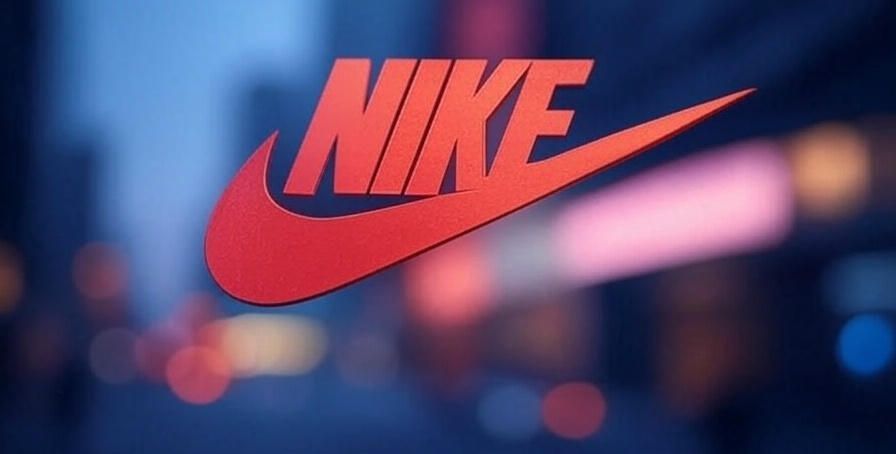
𝗡𝗶𝗸𝗲’𝘀 𝗠𝗶𝘀𝘀𝗶𝗼𝗻 𝗮𝗻𝗱 𝗩𝗶𝘀𝗶𝗼𝗻: 𝗜𝗻𝘀𝗽𝗶𝗿𝗶𝗻𝗴 𝗘𝘃𝗲𝗿𝘆 𝗔𝘁𝗵𝗹𝗲𝘁𝗲
Nike’s mission statement is clear and inspiring: “To bring inspiration and innovation to every athlete in the world (If you have a body, you are an athlete).” This inclusive philosophy, coined by Bill Bowerman, reflects Nike’s belief that sports are for everyone, not just elite competitors. The company strives to empower people through innovative products, services, and experiences designed for the future of sports.
Headquartered in Beaverton, Oregon, Nike operates on a global scale with over 50 offices and 1,152 retail stores worldwide. In 2024, the company employed approximately 79,400 people and generated over $50 billion in revenue, solidifying its position as the world’s leading sports brand.
Nike’s vision goes beyond selling products. It’s about fostering a culture of innovation, sustainability, and community. The company’s purpose, as stated in its 2023 Impact Report, is to “move the world forward through the power of sport” by leveling the playing field, protecting the environment, and expanding access to sports for all.
𝗡𝗶𝗸𝗲’𝘀 𝗣𝗿𝗼𝗱𝘂𝗰𝘁 𝗣𝗼𝗿𝘁𝗳𝗼𝗹𝗶𝗼: 𝗠𝗼𝗿𝗲 𝗧𝗵𝗮𝗻 𝗝𝘂𝘀𝘁 𝗦𝗵𝗼𝗲𝘀
Nike’s product offerings are vast, catering to athletes, casual wearers, and fashion enthusiasts alike. The company operates under three main brands: Nike, Jordan, and Converse, each with a distinct identity. Here’s a breakdown of Nike’s product categories:
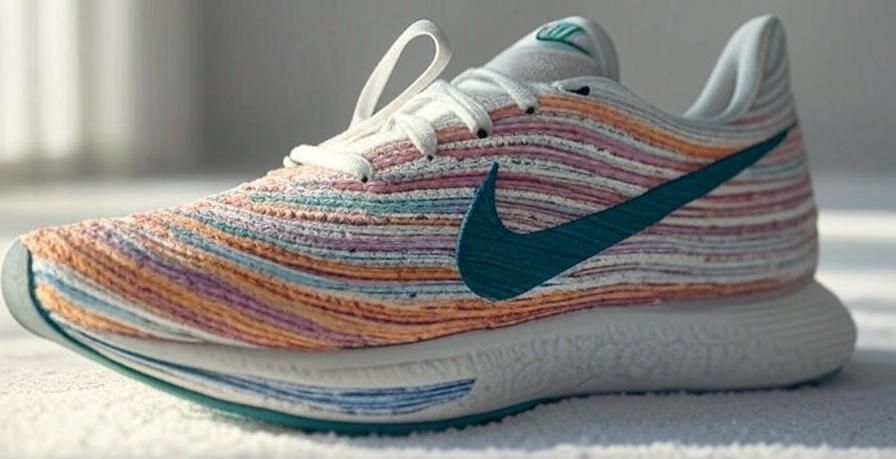
𝟭. 𝗙𝗼𝗼𝘁𝘄𝗲𝗮𝗿
Nike’s footwear is its largest revenue driver, generating approximately $33 billion in sales in the fiscal year ending May 2024. From running shoes to basketball sneakers, Nike’s footwear is known for cutting-edge technology and stylish designs. Iconic lines include:
✓ Air Max: Known for its visible air cushioning, the Air Max line revolutionized sneaker design in 1987 and remains a fashion staple.
✓ Air Jordan: Launched in 1984 in collaboration with basketball legend Michael Jordan, this line redefined sneaker culture and is a favorite among collectors.
✓ Nike Dunk: Originally a basketball shoe, the Dunk became a streetwear icon due to its vibrant colorways and collaborations with artists and brands.
✓ Nike Pro and Nike+: These lines focus on performance-driven designs for athletes, incorporating technologies like moisture-wicking fabrics and fitness tracking.
✓ Phantom, Blazers, and CR7: Specialized lines for soccer, casual wear, and collaborations with athletes like Cristiano Ronaldo.
𝟮. 𝗔𝗽𝗽𝗮𝗿𝗲𝗹
Nike’s apparel includes everything from performance gear to casual clothing. Products like Dri-FIT shirts, leggings, and hoodies are designed to enhance athletic performance while maintaining style. Nike’s apparel segment is a major contributor to its revenue, appealing to both athletes and fashion-conscious consumers.
𝟯. 𝗘𝗾𝘂𝗶𝗽𝗺𝗲𝗻𝘁
Nike produces sports equipment like soccer balls, basketballs, golf clubs, and training gear. While smaller than its footwear and apparel segments, this category supports Nike’s mission to cater to all aspects of sports.
𝟰. 𝗦𝘂𝗯𝘀𝗶𝗱𝗶𝗮𝗿𝗶𝗲𝘀
✓ Converse: Acquired in 2003, Converse is famous for its Chuck Taylor All Star sneakers, blending classic style with modern trends.
✓ Jordan Brand: A cultural phenomenon, the Jordan brand extends beyond shoes to include apparel and accessories, driven by Michael Jordan’s enduring legacy.
✓ Hurley International: Acquired in 2002 and later sold, Hurley focused on surf and youth lifestyle apparel.
Nike’s Nike Lab, a hub for innovation, employs over 40 researchers in fields like biomechanics and physiology to develop cutting-edge products. This commitment to science ensures Nike stays ahead of competitors like Adidas, Puma, and Under Armour.
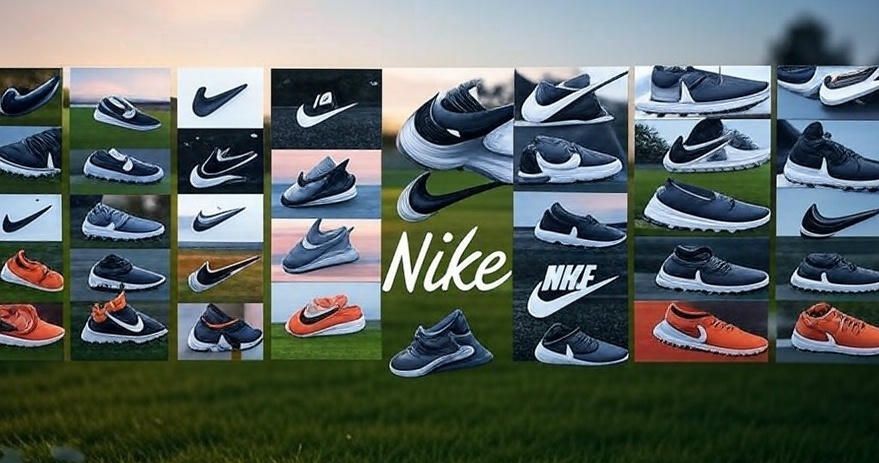
𝗧𝗵𝗲 𝗣𝗼𝘄𝗲𝗿 𝗼𝗳 𝗡𝗶𝗸𝗲’𝘀 𝗠𝗮𝗿𝗸𝗲𝘁𝗶𝗻𝗴: 𝗝𝘂𝘀𝘁 𝗗𝗼 𝗜𝘁
Nike’s marketing is legendary, blending emotional storytelling, celebrity endorsements, and innovative campaigns to connect with audiences worldwide. The “Just Do It” slogan, introduced in 1988, is one of the most recognizable taglines in advertising history. Inspired by a convicted murderer’s last words, “Let’s do it,” the campaign encouraged people to push past excuses and pursue their goals. It resonated with athletes and non-athletes alike, cementing Nike’s brand identity.
𝗞𝗲𝘆 𝗠𝗮𝗿𝗸𝗲𝘁𝗶𝗻𝗴 𝗦𝘁𝗿𝗮𝘁𝗲𝗴𝗶𝗲𝘀
✓ Athlete Endorsements: Nike has partnered with some of the world’s biggest athletes, including Michael Jordan, LeBron James, Cristiano Ronaldo, Serena Williams, and Rafael Nadal. These partnerships elevate Nike’s credibility and inspire fans to emulate their idols. The Jordan-Nike partnership alone generated $80 million in earnings for Jordan in 2012.
✓ Emotional Storytelling: Nike’s ads focus on human stories of perseverance and triumph. Campaigns like “Dream Crazy” featuring Colin Kaepernick and “Find Your Greatness” celebrate underdogs and challenge societal norms, creating deep emotional connections with consumers.
✓ Social Media Mastery: Nike has a massive online presence, with 301.4 million Instagram followers, 39.6 million Facebook followers, and 10.3 million Twitter followers as of 2023. The brand uses platforms like Instagram and TikTok to share product updates, athlete stories, and user-generated content with hashtags like #justdoit and #nikewomen. Nike’s collaboration with Billie Eilish in 2023 gained significant traction, showcasing its ability to tap into pop culture.
✓ Nike+ and Digital Innovation: Launched in 2006, the Nike+ platform allows users to track workouts and share progress, creating a social network for fitness enthusiasts. This digital strategy fosters brand loyalty by integrating Nike into customers’ daily lives.
✓ Sustainability and Social Causes: Nike aligns its campaigns with trending social issues like diversity, inclusion, and sustainability.
For example, the brand promotes eco-friendly materials and supports initiatives like Pride Month, resonating with younger generations.Nike’s marketing isn’t just about selling products—it’s about inspiring a lifestyle. By staying relevant and authentic, Nike maintains its edge in a competitive market.
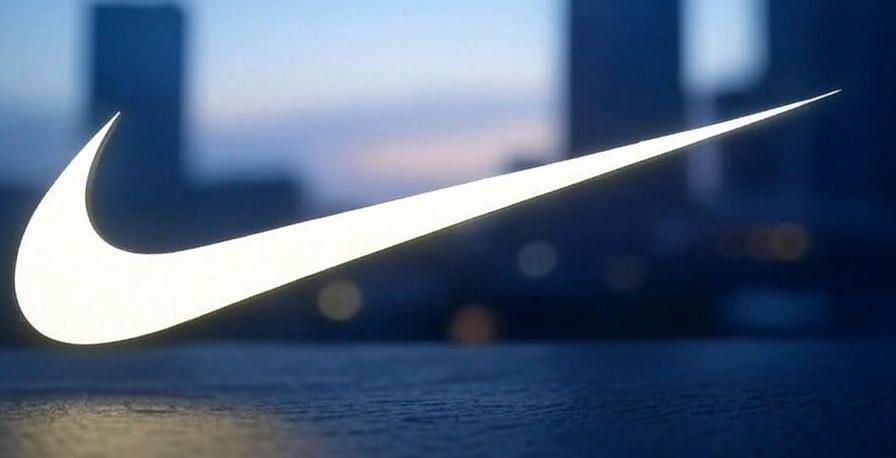
𝗡𝗶𝗸𝗲’𝘀 𝗚𝗹𝗼𝗯𝗮𝗹 𝗥𝗲𝗮𝗰𝗵 𝗮𝗻𝗱 𝗙𝗶𝗻𝗮𝗻𝗰𝗶𝗮𝗹 𝗦𝘂𝗰𝗰𝗲𝘀𝘀
Nike’s global footprint is staggering. With 1,152 stores and operations in over 190 countries, the company dominates the athletic apparel industry. In 2024, Nike’s revenue reached $50 billion, with footwear accounting for the largest share at $33 billion. The brand’s value was estimated at $32 billion in 2020, making it the most valuable sports brand globally.
𝗞𝗲𝘆 𝗙𝗶𝗻𝗮𝗻𝗰𝗶𝗮𝗹 𝗛𝗶𝗴𝗵𝗹𝗶𝗴𝗵𝘁𝘀
✓ Revenue Growth: Nike’s revenue has grown steadily, from $46 billion in 2022 to over $50 billion in 2024, despite a slight dip in North American sales and its direct-to-consumer segment, Nike Direct, in 2024.
✓ Workforce: Nike employs 79,400 people worldwide, with its Beaverton headquarters housing over 11,000 employees across a 400-acre campus.
✓ Market Position: Nike ranks 89th on the Fortune 500 and 239th on the Forbes Global 2000 in 2024, reflecting its financial strength and global influence.
Nike’s success is driven by its ability to innovate, adapt to market trends, and maintain a strong brand identity. Its competitors, including Adidas, Puma, and Under Armour, trail behind in market share and brand value.
𝗖𝗼𝗻𝘁𝗿𝗼𝘃𝗲𝗿𝘀𝗶𝗲𝘀 𝗮𝗻𝗱 𝗘𝘁𝗵𝗶𝗰𝗮𝗹 𝗖𝗵𝗮𝗹𝗹𝗲𝗻𝗴𝗲𝘀
Despite its success, Nike has faced significant criticism over the years, particularly regarding its labor practices, tax avoidance, and environmental impact. These controversies highlight the challenges of operating a global supply chain.
𝟭. 𝗦𝘄𝗲𝗮𝘁𝘀𝗵𝗼𝗽 𝗔𝗹𝗹𝗲𝗴𝗮𝘁𝗶𝗼𝗻𝘀
In the 1990s, Nike was heavily criticized for using sweatshops in countries like China, Vietnam, Indonesia, and Mexico. Reports from groups like Vietnam Labor Watch documented violations of minimum wage and overtime laws, as well as child labor and poor working conditions. Protests in cities like Los Angeles and Boston brought public attention to these issues. Nike responded by disclosing information about its contract factories in its Corporate Governance Report and implementing stricter supplier standards. However, as of 2011, two-thirds of its Converse factories still did not meet Nike’s worker treatment standards.
𝟮. 𝗧𝗮𝘅 𝗔𝘃𝗼𝗶𝗱𝗮𝗻𝗰𝗲
In 2017, the Paradise Papers revealed that Nike used offshore companies to avoid taxes. By transferring its Swoosh trademark to a Bermudan subsidiary, Nike International Ltd., the company funneled $3.86 billion in royalties from 2010 to 2012, avoiding taxes in Europe. This sparked criticism, though Nike maintained that its practices were legal.
𝟯. 𝗪𝗮𝗴𝗲 𝗧𝗵𝗲𝗳𝘁 𝗮𝗻𝗱 𝗪𝗼𝗿𝗸𝗲𝗿 𝗥𝗶𝗴𝗵𝘁𝘀
In 2022, The Guardian reported that over 400,000 garment workers in Karnataka, India, including those in Nike’s supply chain, were paid below the legal minimum wage. The Business and Human Rights Resource Centre criticized Nike for failing to address these abuses adequately.
𝟰. 𝗘𝗻𝘃𝗶𝗿𝗼𝗻𝗺𝗲𝗻𝘁𝗮𝗹 𝗖𝗼𝗻𝗰𝗲𝗿𝗻𝘀
Nike has faced scrutiny for its environmental impact, particularly its reliance on non-sustainable fabrics and high carbon footprint. While the company has committed to using eco-friendly materials, critics argue it hasn’t moved quickly enough to meet sustainability goals.
Nike has taken steps to address these issues, including publishing a Manufacturing Map in 2005 to increase transparency about its supply chain and investing in sustainability programs. However, these controversies remain a point of contention for ethical consumers.
𝗡𝗶𝗸𝗲’𝘀 𝗖𝗼𝗺𝗺𝗶𝘁𝗺𝗲𝗻𝘁 𝘁𝗼 𝗦𝘂𝘀𝘁𝗮𝗶𝗻𝗮𝗯𝗶𝗹𝗶𝘁𝘆
In recent years, Nike has made strides toward sustainability, aligning with global demands for eco-conscious practices. The 2023 Nike Impact Report outlines key initiatives:
✓ Sustainable Materials: Nike is increasing the use of recycled polyester and sustainable cotton in its products. For example, the Nike Air line incorporates recycled materials into its cushioning.
✓ Carbon Neutrality: Nike aims to achieve net-zero carbon emissions by 2050, with investments in renewable energy and waste reduction.
✓ Community Impact: Nike supports programs to expand access to sports, particularly for underrepresented groups, through partnerships with nonprofits and community organizations.
While these efforts are commendable, critics argue that Nike’s progress is slow compared to its scale. Ethical Consumer gave Nike a low rating for its tax conduct and slow adoption of sustainable fabrics, urging the company to do more.
𝗡𝗶𝗸𝗲’𝘀 𝗠𝗮𝗻𝘂𝗳𝗮𝗰𝘁𝘂𝗿𝗶𝗻𝗴 𝗣𝗿𝗼𝗰𝗲𝘀𝘀: 𝗢𝘂𝘁𝘀𝗼𝘂𝗿𝗰𝗶𝗻𝗴 𝗮𝗻𝗱 𝗜𝗻𝗻𝗼𝘃𝗮𝘁𝗶𝗼𝗻
Nike pioneered outsourcing in the athletic industry, relying on independent suppliers in countries like Vietnam, China, and Indonesia to manufacture its products. This approach reduces costs by eliminating the need for Nike to invest in factories, recruitment, or training. However, it also introduces risks like quality inconsistencies and vulnerability to supply chain disruptions.
Nike’s Lean Manufacturing philosophy focuses on minimizing waste while maximizing productivity. The company supports its suppliers with training and incentives to improve sustainability and performance. The Nike Manufacturing Map, first released in 2005, provides transparency about its contract factories, including worker statistics and product details.
The Nike Explore Team Sport Research Lab plays a crucial role in product innovation. With over 40 researchers in fields like biomechanics, physiology, and engineering, the lab develops technologies like Flyknit, a lightweight, form-fitting material that reduces waste during production.
𝗡𝗶𝗸𝗲’𝘀 𝗖𝘂𝗹𝘁𝘂𝗿𝗮𝗹 𝗜𝗺𝗽𝗮𝗰𝘁: 𝗥𝗲𝗱𝗲𝗳𝗶𝗻𝗶𝗻𝗴 𝗦𝗻𝗲𝗮𝗸𝗲𝗿 𝗖𝘂𝗹𝘁𝘂𝗿𝗲
Nike’s influence extends beyond sports into fashion, music, and pop culture. The Air Jordan line, launched in 1984, sparked a sneaker culture revolution, turning sneakers into collectible items. Collaborations with artists, designers, and brands like Supreme, Off-White, and Travis Scott have made Nike sneakers status symbols in streetwear.
Nike’s sponsorships of sports teams like FC Barcelona, Paris Saint-Germain, and the NBA have solidified its presence in global sports. The brand’s ability to blend performance with style has made it a favorite among diverse audiences, from professional athletes to casual wearers.
𝗖𝗵𝗮𝗹𝗹𝗲𝗻𝗴𝗲𝘀 𝗮𝗻𝗱 𝗖𝗼𝗺𝗽𝗲𝘁𝗶𝘁𝗼𝗿𝘀
Nike faces stiff competition from brands like Adidas, Puma, and Under Armour, which also invest heavily in innovation and marketing. However, Nike’s brand value, global reach, and loyal customer base give it a significant edge. Challenges include:
✓ Economic Fluctuations: Rising production costs and inflation can impact profitability.
✓ Sustainability Pressure: Consumers demand greener practices, pushing Nike to accelerate its sustainability efforts.
✓ Ethical Scrutiny: Ongoing criticism of labor practices requires Nike to maintain transparency and accountability.
𝗧𝗵𝗲 𝗙𝘂𝘁𝘂𝗿𝗲 𝗼𝗳 𝗡𝗶𝗸𝗲
Nike’s future is bright but not without challenges. The company is investing in digital transformation, with platforms like Nike+ and the SNKRS app enhancing customer engagement. Its focus on sustainability, diversity, and inclusion aligns with the values of younger generations, ensuring long-term relevance. However, Nike must address ethical concerns and accelerate its sustainability goals to maintain consumer trust.
By continuing to innovate, inspire, and adapt, Nike is poised to remain the world’s leading sports brand. From its humble beginnings as Blue Ribbon Sports to its current status as a cultural and athletic icon, Nike’s journey is a testament to the power of vision, resilience, and the drive to “Just Do It.”
𝗖𝗼𝗻𝗰𝗹𝘂𝘀𝗶𝗼𝗻
Nike, Inc. is more than a company—it’s a global movement that inspires athletes and dreamers alike. From its innovative products to its powerful marketing, Nike has redefined what it means to be a sports brand. While controversies have challenged its reputation, Nike’s commitment to improvement and innovation keeps it at the forefront of the industry. Whether you’re lacing up a pair of Air Max, cheering for a Nike-sponsored athlete, or simply admiring the Swoosh, Nike’s impact is undeniable. As the company continues to evolve, one thing remains constant: Nike will always encourage us to push our limits and “Just Do It.”

